Volleyball drills are specialized exercises that enhance teams and players volleyball skills. [1] There are numerous volleyball drills that teams and players can utilize in order to improve and further develop their skills in all areas of the game such as passing, serving, attacking, setting, blocking, and digging. From beginners to well-seasoned players, drills can help all players gain repetitions in various skills and positions; the more repetitions, the better a player can become.
“Around the World” is a serving drill, and its purpose is for players to practice serving to the six different zones on the court. [2] [3] Being able to serve and target any area on the court is a valuable skill to have, especially when playing an opponent.
Servers vs. Passers is a drill that gives teams the opportunity to practice their serve-receive skills. [4] The goal of this drill is to improve the skills of passers and encourage aggressive serving. [5]
A popular setting drill is called the “Front-Back Challenge." The purpose of this drill is for the setter to feel comfortable adjusting to last minute directions on where to set the ball, as well as practice consistently setting the ball to any of the front row hitters: outside, middle, and right side. [1]
Blocking is a key component in the game of volleyball, and is the first line of defense against an attack. [6] A drill that allows players to work on their blocking skills is called "Blocking Various Attacks]." [7] The purpose of this drill is to teach blockers to block a variety of attacks that will come from the opponents side of the court.
Digging is another key component in that it is the second line of defense against an attack in the game of volleyball. A drill that allows players to hone their defensive digging skills is called "Digging Drill". [7] The purpose of this drill is for players to practice absorbing the ball.

Volleyball is a team sport in which two teams of six players are separated by a net. Each team tries to score points by grounding a ball on the other team's court under organized rules. It has been a part of the official program of the Summer Olympic Games since Tokyo 1964. Beach volleyball was introduced to the programme at the Atlanta 1996 Summer Olympics. The adapted version of volleyball at the Summer Paralympic Games is sitting volleyball.
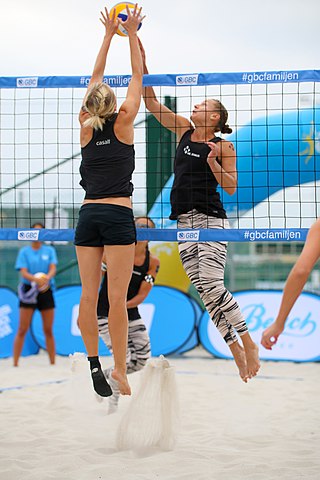
Beach volleyball is a team sport played by two teams of two or more players on a sand court divided by a net. Similar to indoor volleyball, the objective of the game is to send the ball over the net and to ground it on the opponent's side of the court. Each team also works in unison to prevent the opposing team from grounding the ball on their side of the court.
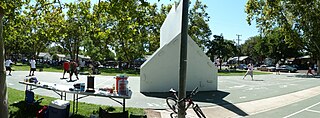
American handball, known as handball in the United States and sometimes referred to as wallball, is a sport in which players use their hands to hit a small, rubber ball against a wall such that their opponent(s) cannot do the same without the ball touching the ground twice or hitting out-of-bound. The three versions are four-wall, three-wall and one-wall. Each version can be played either by two players (singles), three players (cutthroat) or four players (doubles), but in official tournaments, singles and doubles are the only versions played.
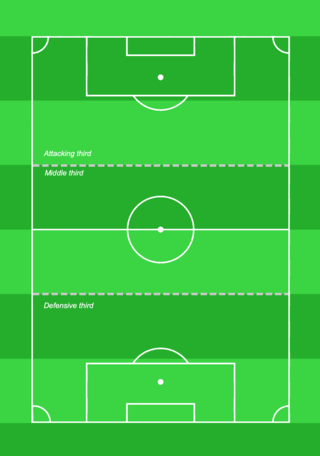
Team tactics as well as individual skills are integral for playing association football. In theory, association football is a very simple game, as illustrated by Kevin Keegan's namely assertion that his tactics for winning a match were to "score more goals than the opposition". Tactical prowess within the sport is nonetheless a craftsmanship of its own, and one of the reasons why managers are paid well on the elite level. Well-organised and ready teams are often seen beating teams with more skillful players on paper. Manuals and books generally cover not only individual skills but tactics as well.
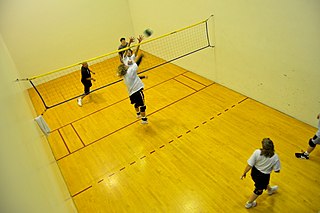
Wallyball is a fast-paced sport that is similar to volleyball played in a racquetball court, where it is legal to hit the ball off of the walls.

In basketball, there are five players on court per team, each assigned to positions. Historically, these players have been assigned to positions defined by the role they play on the court, from a strategic point of view. The three main positions are guard, forward, and center, with the standard team featuring two guards, two forwards, and a center. Over time, as more specialized roles developed, each of the guards and forwards came to be differentiated, and today each of the five positions is known by a unique name and number: point guard (PG) or 1, the shooting guard (SG) or 2, the small forward (SF) or 3, the power forward (PF) or 4, and the center (C) or 5.

In sports, a starting lineup is an official list of the set of players who will participate in the event when the game begins. The players in the starting lineup are commonly referred to as starters, whereas the others are substitutes or bench players.
Basketball moves are generally individual actions used by players in basketball to pass by defenders to gain access to the basket or to get a clean pass to a teammate to score.

This glossary of basketball terms is a list of definitions of terms used in the game of basketball. Like any other major sport, basketball features its own extensive vocabulary of unique words and phrases used by players, coaches, sports journalists, commentators, and fans.

Fistball is a sport of European origin, primarily played in the German-speaking nations of Austria, Germany and Switzerland, as well as in Brazil. The objective of the game is similar to volleyball, in that teams try to hit a ball over a net, but the rules vary from volleyball in several major ways. The current men's fistball World Champions are Germany, winners of both the 2023 Men's World Championships and the fistball category at the 2022 World Games, while the current women's fistball World Champions are also Germany, after winning the 2021 Women's World Championships.
This is a list of the more common English volleyball jargon terms:
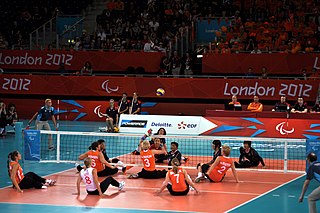
Sitting volleyball is a form of volleyball for athletes with a disability. As opposed to standing volleyball, sitting volleyball players must sit on the floor to play.
Several sports related to volleyball have become popular. Indoor volleyball and beach volleyball are both events at the Olympics, and sitting volleyball is an event at the Paralympics. Other varieties are localised, or are played at an amateur or informal level.
The following terms are used in American football, both conventional and indoor. Some of these terms are also in use in Canadian football; for a list of terms unique to that code, see Glossary of Canadian football.
Volleyball offensive systems are the ways in which a coach can personalize and tweak his or her team's offense based on each player's skill level to make the team as competitive as possible. This is done by using different formations that allow a team to use a variety of volleyball attacks. A team on offense will try to increase the probability of winning a point on a hit by confusing the opposing blockers and disguising the setter's intended receiver as much as possible. This is done keeping in mind that the goal is to score a point and that running a successful offense is executed differently for every team. Teams use offensive systems in whatever way suits the team best.
Basketball is a ball game and team sport in which two teams of five players try to score points by throwing or "shooting" a ball through the top of a basketball hoop while following a set of rules. Since being developed by James Naismith as a non-contact game that almost anyone can play, basketball has undergone many different rule variations, eventually evolving into the NBA-style game known today. Basketball is one of the most popular and widely viewed sports in the world.

In volleyball, spiking is the offensive play where a player swings the ball with their palm sharply downwards over the net and into the opposing court, making it difficult for the opposing team to recover the ball. The mechanism of spiking is unique to volleyball, but its counterparts in other sports include slam dunking in basketball, smashing in tennis, or shooting in association football.

Roundnet is a ball game created in 1989 by Jeff Knurek, inspired primarily by concepts from volleyball. The game is played between two teams, usually with two players each. Players initially line up around a small trampoline-like net at the start of a point and starts with a serve from one team to another. Teams alternate hitting the ball back to the net.
This glossary provides definitions and context for terminology related to, and jargon specific to, the sport of pickleball. Words or phrases in italics can be found on the list in their respective alphabetic sections.